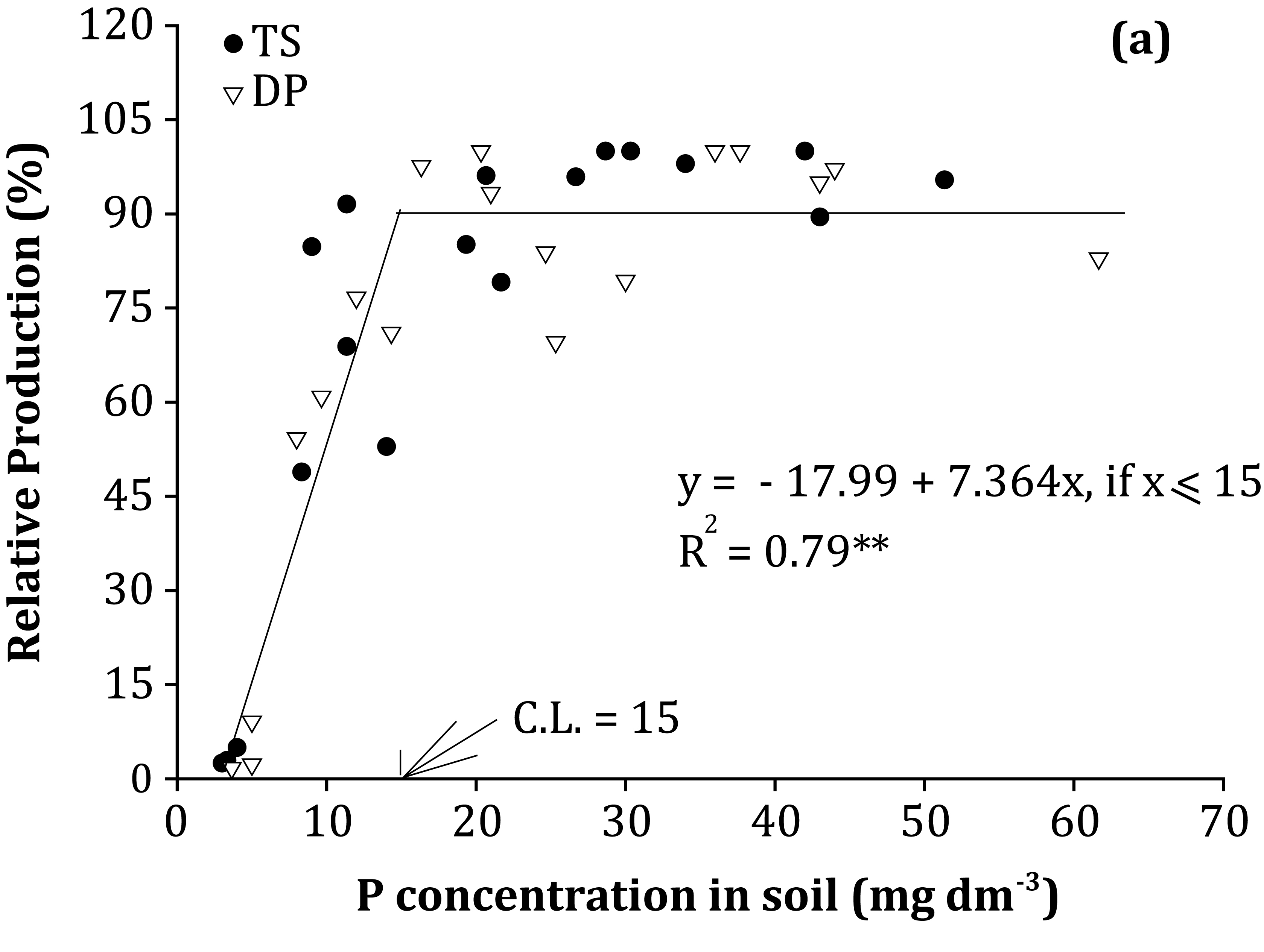Agronomic and economic efficiency of the decanted phosphate as function of the liming in marandu grass (Brachiaria brizantha)
Keywords:
pH, phosphorus, residual effect, critical level of P. Brachiaria brizanthaAbstract
The decanted phosphate (DP) is an environmental liability for the fertilizer industries and its use as a phosphate fertilizer has been suggested in agriculture. However, there are few researches that studies its efficiency. In this sense, this experiment was conducted in a greenhouse with the main objective to evaluate the agronomic efficiency and the relative economic efficiency of decanted phosphate (DP) in the presence and absence of lime during three growth periods of Brachiaria brizantha cv. Marandu (marandu grass). In addition, the critical levels of P were determined in soil and shoots of plants. The indices Equivalent Triple Superphosphate medium (EqTS medium) e Relative Economic Efficiency (REE) were calculated in order to evaluate the efficiency of DP and triple superphosphate (TS). The critical levels of P were set when relative production was 90%. The DP efficiency indices were more than 100% when not applied liming. The liming reduces the agronomic and economic efficiency of DP. The P critical levels in soil and shoots of the marandu grass were 15 mg dm-3 and 1.2 g kg-1, respectively.

Downloads
Published
Issue
Section
License
Aquellos autores/as que tengan publicaciones con esta revista, aceptan las Políticas Editoriales.


